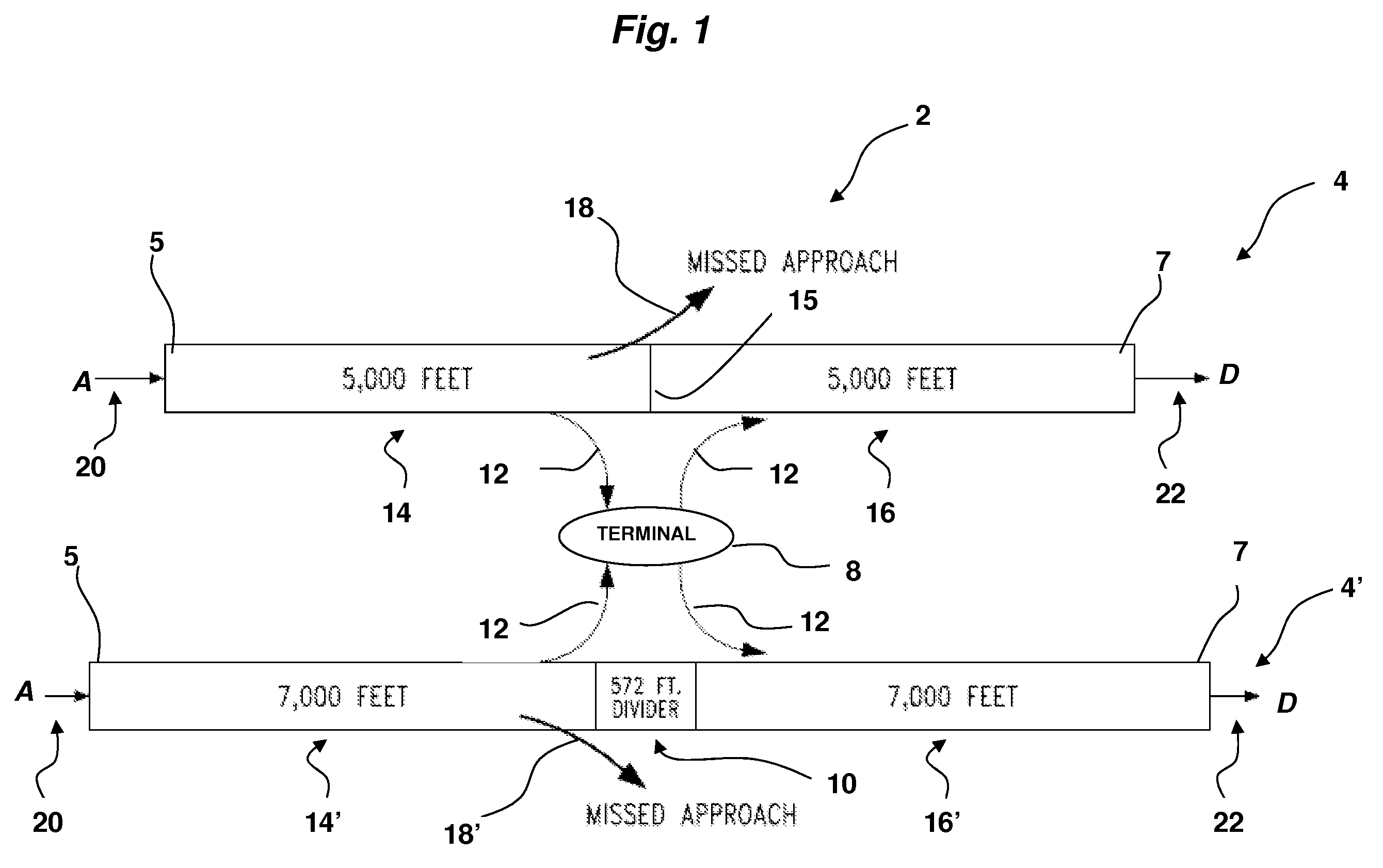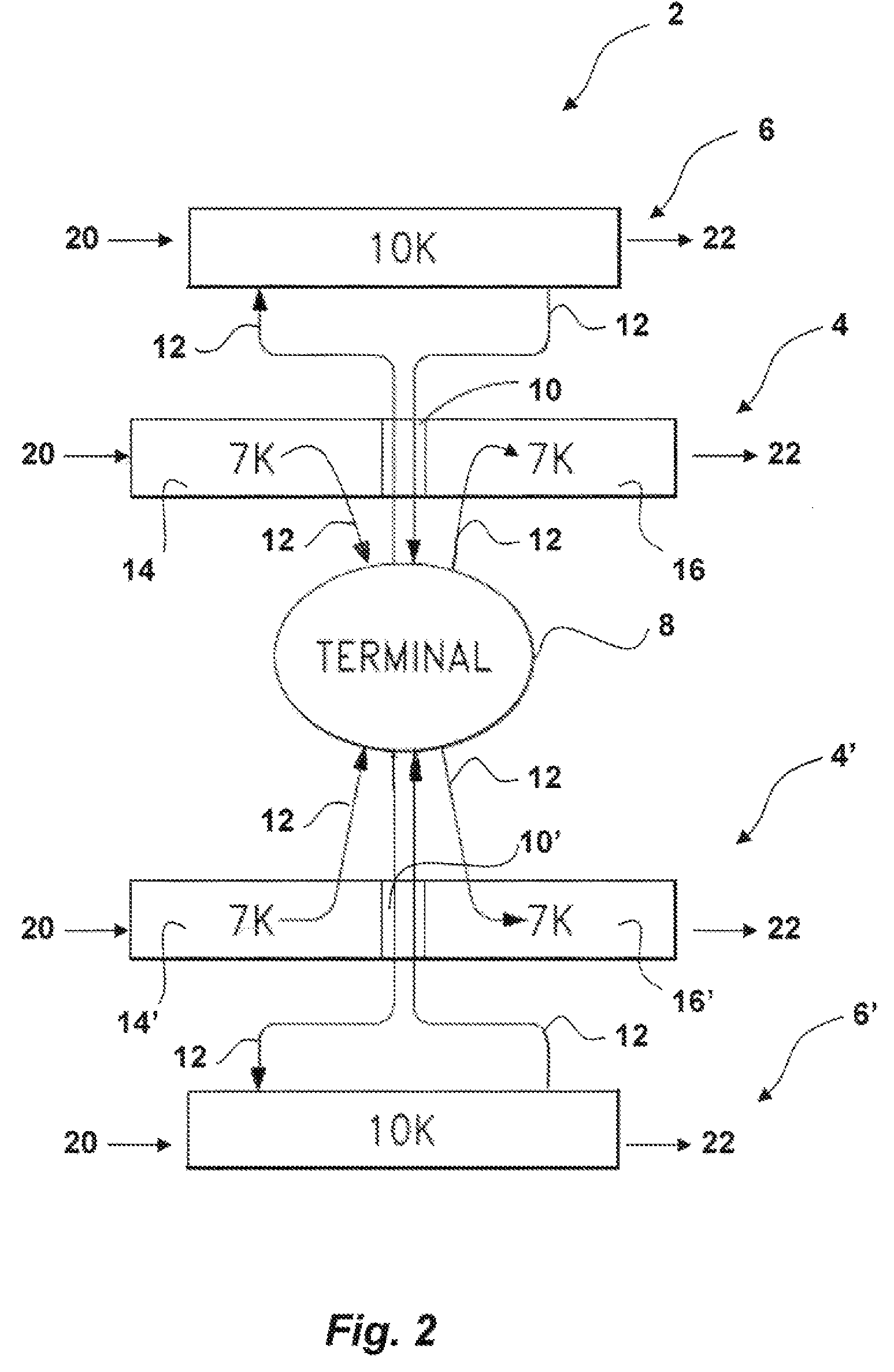Safe runway aircraft arrival and departure system using split runway design
a runway design and aircraft arrival and departure technology, applied in the field of airport runway systems, can solve the problems of aircraft arrival and departure sequences being delayed, aircraft in the air being forced into holding patterns, etc., to achieve safe, efficient and fuel-saving effects
- Summary
- Abstract
- Description
- Claims
- Application Information
AI Technical Summary
Benefits of technology
Problems solved by technology
Method used
Image
Examples
Embodiment Construction
:
[0021]The following detailed description illustrates the invention by way of example, not by way of limitation of the scope, equivalents or principles of the invention. This description will enable one skilled in the art to make and use the invention, and describes several embodiments, adaptations, variations, alternatives and uses of the invention.
[0022]Safe Runway Aircraft Arrival and Departure System Using Split Runway Design
[0023]FIG. 1 shows an exemplary Safe Runway Aircraft Arrival and Departure System Using Split Runway Design 2 with airport terminal 8, two split runways 4, 4′, a buffer zone 10, and designated missed approach flight paths 18, 18′. The shorter split runway 4 is an existing linear runway 10,000 feet long divided medially between opposed first and second ends 5, 7 into two equal portions, a landing strip 14 5,000 feet long and a takeoff strip 16 5,000 feet long. A dividing line 15 separates the landing 14 and takeoff strips 16. The line 15 is a painted strip cr...
PUM
 Login to View More
Login to View More Abstract
Description
Claims
Application Information
 Login to View More
Login to View More - R&D
- Intellectual Property
- Life Sciences
- Materials
- Tech Scout
- Unparalleled Data Quality
- Higher Quality Content
- 60% Fewer Hallucinations
Browse by: Latest US Patents, China's latest patents, Technical Efficacy Thesaurus, Application Domain, Technology Topic, Popular Technical Reports.
© 2025 PatSnap. All rights reserved.Legal|Privacy policy|Modern Slavery Act Transparency Statement|Sitemap|About US| Contact US: help@patsnap.com



